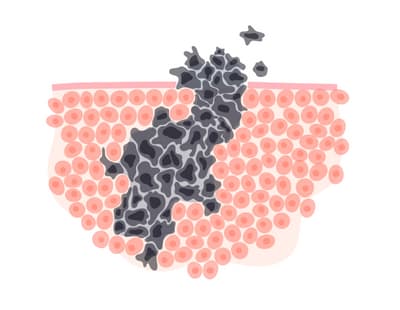Unmasking the Heterogeneity of a Well-Studied Melanoma Cell Line with Single Cell DNA Analysis
The COLO829 cell line has been used extensively as a model for melanoma studies. Despite this, the true clonality of this cell line was believed to be undetermined. Past efforts to characterize COLO829 using bulk sequencing methods provided evidence suggesting that the cell line could be composed of more than one clone. However, the averaged read-out of bulk sequencing masks rare clones, especially if a major clone dominates the heterogeneous cell line. This happens when the averaged read-out overrepresents the genomic data from the dominant group of cells, causing rare clones to remain hidden. Ultimately, the picture of the cell line that emerged from these studies seemed to be unclear, leaving many researchers to assume that COLO829 was composed of a single clone.
Enrique Velazquez-Villarreal and colleagues from the Department of Translational Genomics at Keck School of Medicine, USC teamed up with scientists at 10x Genomics to determine the clonality of COLO829. Using the Chromium Single Cell CNV Solution, they performed single cell sequencing of genomic DNA from 1,475 cells, and identified four major subclones - Groups A - D (1). Among these four subclones, Group A and Group B were shown to have three copies of chromosome 8, whereas Group C and Group D had four copies. Additionally, Group B and Group C showed genetic losses on three other chromosomes. These findings challenge previous conclusions that this well-studied cell line is a single clone. In fact, it appears to be a complex mixture with structural genetic variants that contribute to the sub-clonal evolution of the disease and may provide an explanation of reported variability in growths of COLO829 (1).
This study demonstrates the power of single cell genomic analysis to uncover a broad spectrum of information from complex cell lines, as well as its applicability for studies using tumor samples. In addition to finding evidence for the CNV events previously identified by bulk sequencing, the team was able to link them to specific clonal populations. Moreover, they discovered events believed to be unreported. They further explored the breakpoints of these CNV events, identifying genes that could be implicated in oncogenesis and allowing researchers to extrapolate the role of CNV events in driving disease progression. This degree of insight into the genome may also help researchers identify loss of heterozygosity.
While bulk whole genome sequencing analysis has given major insights into tumor biology, the data it gives can leave certain levels of heterogeneity masked. With the ability to interrogate the genome and subcategorize cell clones offered by single cell CNV analysis, researchers can overcome the limitations of traditional methods applied to resolve tumor heterogeneity and uncover hidden insights in not only well studied cell lines, but also in heterogeneous and complex tumor samples.

What will you do with the Chromium Single Cell CNV Solution?
To learn more about how this technology can provide new insights into tumor heterogeneity and progression, watch Dr. David Craig, Professor of Translational Genomics and Co-Director of the Institute of Translational Genomics at the Keck School of Medicine, USC, in our upcoming webinar. Register here →
And for more help getting started with this solution, review the COLO829 single cell CNV data set and our Technical Note, which offers sequencing guidelines for single cell CNV detection.
- Velazquez-Villarreal, S. Maheshwari, J. Sorenson et al. Resolving sub-clonal heterogeneity within cell-line growths by single cell sequencing genomic DNA. bioRxiv. (2019).
